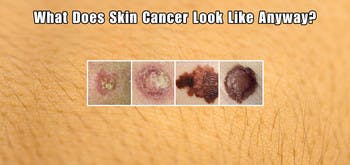Algunas señales que no debería encontrar
Stop reading (just for a second!) and take a look at your hands. Are they freckled? Do you have age spots? Discolorations? Now think: When was the last time you really examined your skin to familiarize yourself with its moles and other spots?
For many of us, that answer is never. Yet learning what is normal for your skin—and what is not—is one of the best things you can do to catch skin cancer early and improve your chances of recovery.
To get started, visit a dermatologist, who will examine you to determine which spots are normal and which ones may pose a risk. A dermatologist can also demonstrate how to do a self-exam and recommend a routine for good skin care. Find a dermatologist near you.
At home, get into the habit of performing a monthly self-exam to check for any new moles or changes in existing ones. When doing a self-exam, be sure to check places such as between your fingers and toes, on your scalp, and under your arms, since you may not see moles in these places during your daily routine.
One of the best things you can do to detect skin cancer early is to check your moles for changes in appearance. Familiarize yourself with the ABCDEs and monitor your moles to look for these warning signs. If you’re unsure if your mole might be cancerous, it’s always best to consult a dermatologist or your primary care physician for advice.
For more information on skin cancer and its warning signs, visit www.protectyourskinde.com.

